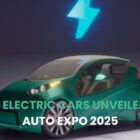Best Practices For Charging Electric Vehicles At Offices
The fact is that the number of Electric vehicles has increased on Indian roads. Many people are switching to electric vehicles to do their bit to save the planet and appear cool! Some of your employees might be bringing their EVs to the workplace. Hence, you should establish best practices concerning charging EVs at your office.
Effective office EV charging policies
Effective workplace electric vehicle charging policies for EV drivers comprise enforceable rules on using available workplace charging stations. It is necessary to implement policies that clearly state where all employees should park their vehicles, an EV or a conventional one.
Motivate EV drivers
Besides framing policies, effective employers should develop a viable environment. Drivers should be encouraged to follow established best practices concerning using charging stations, thereby reducing charging conflicts. Incorporate behavioral norms and best practices within charging station policies. You may even consider encouraging its use without establishing a formal charging policy. The latter is effective in case of low demand for workplace charging.
Networked stations
Organizations can evaluate overall system usage with digitally networked stations. They can also identify potential solutions and shortcomings for EV charging stations in India. Times of use, usage level, energy factors, duration, and vehicle type are some parameters that need evaluation and constant monitoring. Although installing networked stations is expensive and involves monthly service fees, many organizations favor it.
Driver communication network
A well-developed communication link is desired between EV drivers using office charging stations. It helps streamline station usage or prevent conflicts. Often, individual organizations develop custom communication networks based on existing programs or systems. It might include a shared contact list, interoffice email group, social media group, or calendar-based reservation systems.
Charging network for visitors
Charging stations installed at the workplace can also be shared with visitors, clients, and customers. In such a case, information should be posted in a visible space at the station, allowing visitor-regular communication. Thus, the EV visitor driver can enquire about space to charge their vehicle during their stay. Such a communication network can help new drivers eager to power their cars at work. They are to coordinate with other users at the charging station.
Charging sharing etiquettes
At times EVs might exceed the available capacity at the charging station. In such circumstances, EVs that have completed charging are shifted to another place. It enables others to use the station. Workplace scenario is common for Levels-2 charging stations. However, EVs’ range is not hampered since most commuting EVs get charged fully after 4 hours.
Charging time
Policies should be implemented to limit the duration when EVs can be powered at work. Cars can be powered at the office charging station either after or before lunch break. Once fully charged, EVs can leave the parking space to accommodate others who need charging. It should be part of the charging policy. Charging schedules should be circulated amongst EV drivers. The topic should be discussed with employees, and appropriate action taken based on individual schedules.
Avoiding rush
With comprehensive charging policies in place, every EV driver will have easy and quick access to the charging station. No one will have to rush to the station to access the charger. Several organizations are noticed to have fewer chargers and need more EVs to be charged! Thus, implementing well-drafted workplace charging policies helps support charge sharing among EV drivers.
Challenges faced
EV drivers, however, have one major complaint stating that they need to move their EVs during the workday. It causes them inconvenience and disruption, especially if their vehicles need parking at a distance. Usually, charging station cords are lengthy enough to reach ports on different EVs. Hence, the charging station placed amongst two parking spaces is accessible by those vehicles.
Infrastructure design
The charging station’s design should be such that it gets used to the optimum. The infrastructure should accommodate empty parking spaces and stand-by EV charging areas for vehicles not charged currently. High-priority locations should have more reserved spaces to accommodate EVs. This strategy works best if chargers are placed in convenient parking areas and not in too high-profile areas.
Sharing charging stations
If more than one vehicle can access a charging station, the EV driver might have to remove the chord from the fully-charged EV. Establishing acceptable etiquette can help avoid conflicts among drivers. Electric vehicles are better unplugged after it is fully charged. The driver can park his EV beside the charging one, leaving the charging port open to indicate they desire to get plugged in once its charging is complete in the other vehicle.
Implementing workplace policies
With electric cars increasing on the roads, workplace charging is gaining importance nowadays. Workplace charge is a convenience for employees and a challenge for management. Establishing workplace charging best practices helps overcome challenges. Hence, employers should consider energy costs, infrastructure, and access. Well-established best practices ensure charging stations get used to the optimum.




